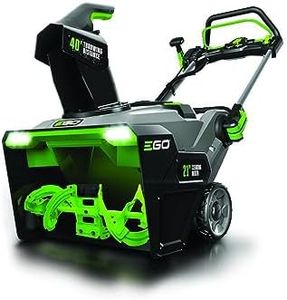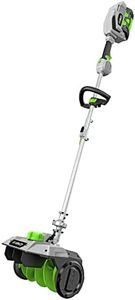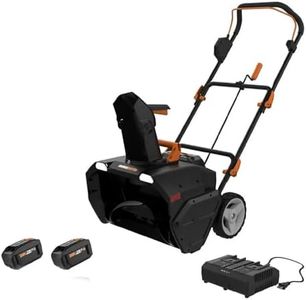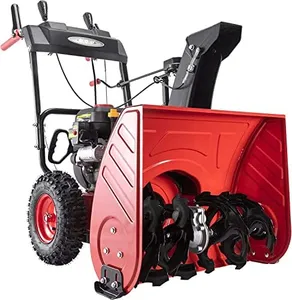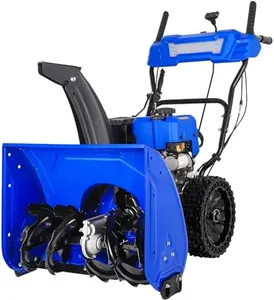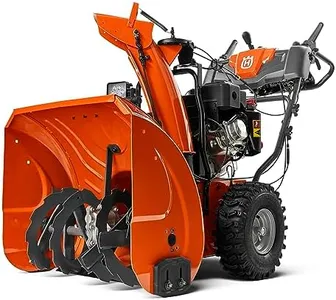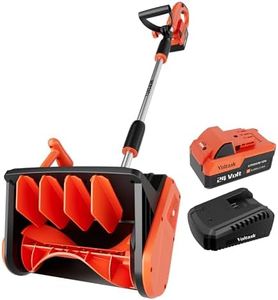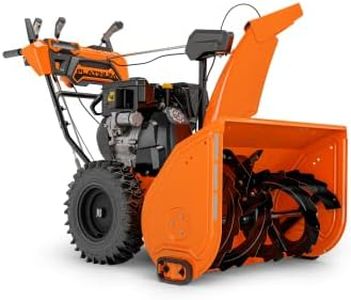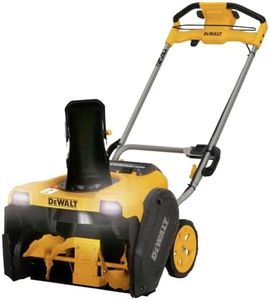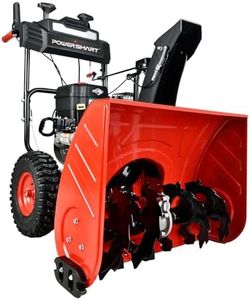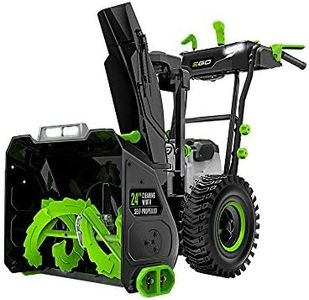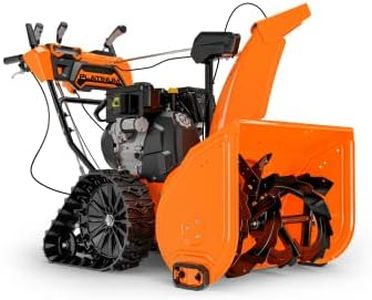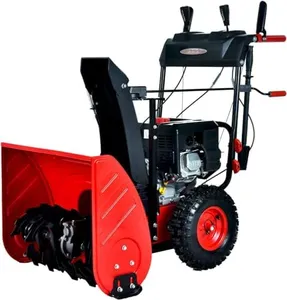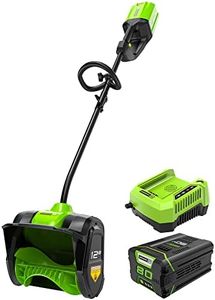We Use CookiesWe use cookies to enhance the security, performance,
functionality and for analytical and promotional activities. By continuing to browse this site you
are agreeing to our privacy policy
10 Best Snowblowers 2025 in the United States
How do we rank products for you?
Our technology thoroughly searches through the online shopping world, reviewing hundreds of sites. We then process and analyze this information, updating in real-time to bring you the latest top-rated products. This way, you always get the best and most current options available.

Buying Guide for the Best Snowblowers
Choosing the right snowblower can make a significant difference in how efficiently and comfortably you can clear snow from your driveway, sidewalks, and other areas. The key to finding the best snowblower for your needs is to understand the various specifications and features that different models offer. By considering factors such as the size of the area you need to clear, the typical snowfall in your region, and your physical capabilities, you can select a snowblower that will make your winter chores much easier.Clearing WidthThe clearing width of a snowblower refers to the width of the path it can clear in a single pass. This spec is important because it determines how quickly you can clear a given area. Snowblowers with a wider clearing width can clear large areas more quickly, but they may be harder to maneuver in tight spaces. For small driveways and sidewalks, a clearing width of 18-22 inches is usually sufficient. For larger areas, you might want a snowblower with a clearing width of 24 inches or more. Consider the size of the area you need to clear and how much time you want to spend on snow removal when choosing the right clearing width for you.
Intake HeightThe intake height of a snowblower is the maximum height of snow that the machine can handle in one pass. This spec is crucial if you live in an area that experiences heavy snowfall. A higher intake height means the snowblower can handle deeper snow without getting clogged or bogged down. For areas with light to moderate snowfall, an intake height of 12-18 inches is usually adequate. For regions with heavy snowfall, look for a snowblower with an intake height of 20 inches or more. Think about the typical snowfall in your area to determine the appropriate intake height for your needs.
Stage TypeSnowblowers come in single-stage, two-stage, and three-stage models. The stage type refers to the number of steps the snowblower uses to clear snow. Single-stage snowblowers are lightweight and best for light to moderate snowfall on paved surfaces. They use an auger to scoop and throw the snow in one motion. Two-stage snowblowers are more powerful and can handle heavier snowfall and uneven terrain. They use an auger to collect the snow and an impeller to throw it farther. Three-stage snowblowers are the most powerful and can handle the heaviest snowfall and ice. They use an accelerator in addition to the auger and impeller to break up and throw snow more efficiently. Choose the stage type based on the severity of your snowfall and the type of surfaces you need to clear.
Engine PowerThe engine power of a snowblower is measured in horsepower (HP) or cubic centimeters (cc) and determines how effectively the machine can handle heavy, wet snow and ice. More powerful engines can clear snow more quickly and throw it farther. For light to moderate snowfall, an engine with 5-7 HP or 150-200 cc is usually sufficient. For heavy snowfall, look for an engine with 8-12 HP or 250-400 cc. Consider the typical snow conditions in your area and how quickly you want to complete your snow removal tasks when choosing the right engine power for your snowblower.
Throw DistanceThe throw distance of a snowblower indicates how far the machine can throw the cleared snow. This spec is important if you need to move snow a significant distance away from the area you're clearing. A longer throw distance can help prevent snow from piling up in unwanted areas. For small areas, a throw distance of 15-20 feet is usually sufficient. For larger areas or if you need to throw snow over obstacles, look for a snowblower with a throw distance of 30 feet or more. Think about where you need to move the snow and choose a throw distance that will help you achieve that.
ManeuverabilityManeuverability refers to how easy it is to handle and steer the snowblower. This spec is influenced by the weight of the machine, the type of wheels or tracks, and any additional features like power steering. Lighter snowblowers are easier to maneuver but may not be as powerful. Heavier models can handle more snow but may be harder to steer. Look for features like large, treaded wheels or tracks for better traction and power steering for easier handling. Consider your physical strength and the layout of the area you need to clear when choosing a snowblower with the right level of maneuverability for you.
Electric StartAn electric start feature allows you to start the snowblower with the push of a button, rather than pulling a recoil starter. This spec is important for convenience, especially in cold weather when engines can be harder to start. Electric start is particularly useful for those who may have difficulty with pull-starting an engine. If you value ease of use and want to avoid the hassle of pull-starting, look for a snowblower with an electric start feature.
Most Popular Categories Right Now
